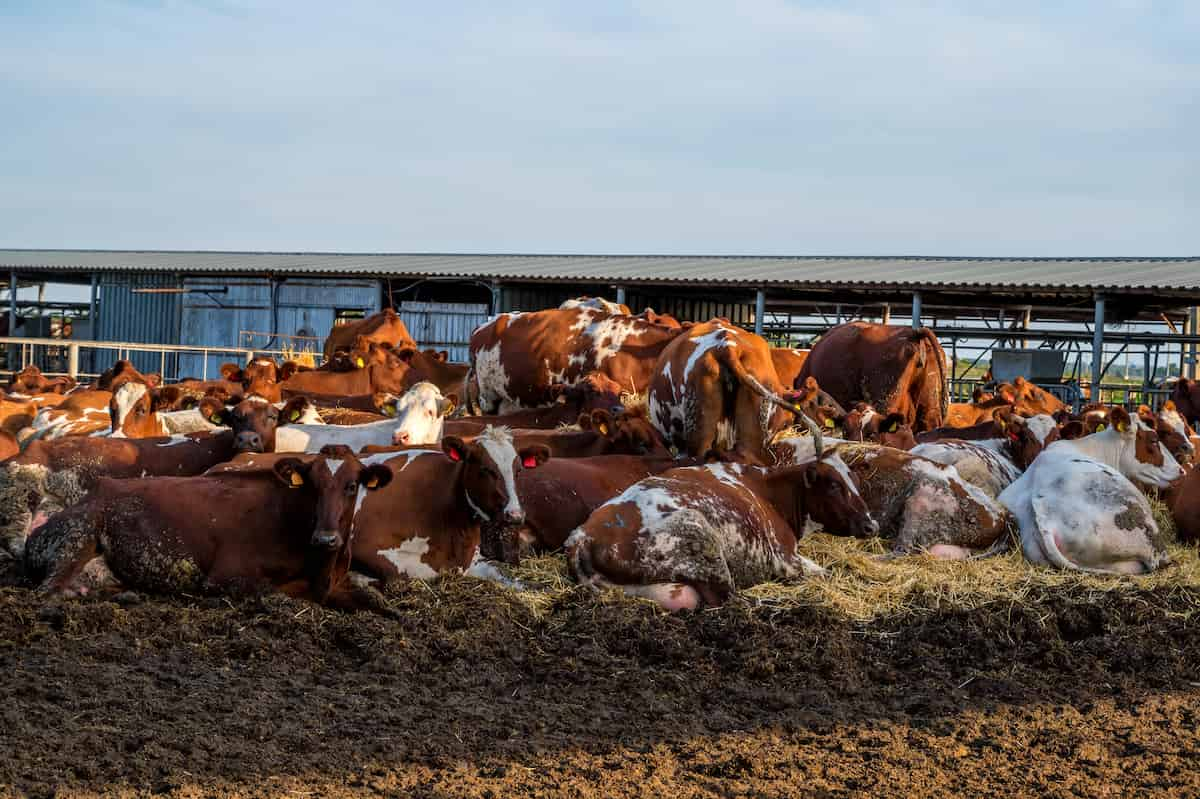Bovine ephemeral fever is a viral disease spread by insects that affect cattle and water buffalo. It is most frequent in Africa, the Middle East, Australia, and Asia. The condition causes reduced milk production, recumbency, and, in severe cases, death. Infections in certain animals may not cause any symptoms.

The diagnosis is made via PCR testing, and the therapy includes NSAIDs and supportive care for recumbent cows. There are vaccines available, but their efficacy varies. The disease is not infectious, but it can infect other animals, including deer, goats, and sheep.
Bovine Ephemeral Fever Management in Cattle
Causes of Bovine Ephemeral Fever in Cattle
- Bovine ephemeral fever (BEF) is caused by a single serotype of the BEF virus belonging to the Ephemerovirus genus in the Rhabdoviridae family. The disease is transmitted by arthropods and affects mainly cattle and buffaloes, with younger animals being more susceptible. The virus is inactivated at pH levels outside of 5 to 10.
- It can be transmitted through IV inoculations but not through contact or fomites. The disease is prevalent during the wet season in the tropics and in summer to early autumn in the subtropics or temperate regions. BEF can cause significant morbidity, with mortality rates ranging from 1% to 2% and higher in certain groups of animals.
Disease Cycle of Bovine Ephemeral Fever in Cattle
- Direct contact or discharges between animals do not spread Bovine Ephemeral Fever (BEF); instead, it is spread by arthropods such sand flies and mosquitoes like Culex and culicoides.
- The BEF virus may travel quickly by wind during outbreaks, which normally happen in the summer. Within five months, reports of the virus having moved thousands of kilometers have been made.
- Within five days, the virus is present in the blood of infected cattle, and flies can spread the virus from the blood; just 0.002 ml of blood is needed to infect susceptible animals with the illness.
- Recovered animals do not carry the virus, and it is suggested that some fauna may be responsible for carrying over the virus from season to season. Whole blood injections can also transmit the disease.
What are the Symptoms of Bovine Ephemeral Fever in Cattle?
- Bovine Ephemeral Fever in cattle is characterized by a sudden onset of clinical symptoms, including a high fever ranging from 103-107˙F or more, shivering, and muscle trembling.
- The affected cattle may refuse to move or have difficulty moving with an arched back. Anorexia and a reduction in milk yield are also observed. The disease can cause excessive salivation, nasal discharge, and tearing of the eyes.
- The muscles in the affected limb become stiff, hard, and painful, and the animal may show lameness and acute laminitis. Severely affected cattle may lie down with extended rigid hind limbs.
- The lameness may shift from one leg to another within a few hours, and recumbent animals may show suspended rumination, grinding of the teeth, and signs of groaning.
- The disease causes significant discomfort and pain in affected cattle, resulting in milk production losses and sometimes death.
Diagnosis of Bovine Ephemeral Fever in Cattle
- During an epidemic, clinical indicators are used to diagnose ephemeral bovine fever. Blood samples are taken from ill and healthy cattle in affected herds to perform a differential white blood cell count and plasma fibrinogen levels.
- PCR and viral isolation can also establish the virus’s existence. Infection is confirmed by a 4-fold rise in antibody titer between matched samples.
- To isolate the virus, inoculate mosquito cell cultures with defibrinated blood before transferring them to baby hamster kidney or monkey kidney cell cultures.
- PCR, neutralization assays, and ELISA are used to identify isolated viruses.
In case you missed it: Black quarter Disease Management in Cattle: Symptoms, Treatment, and Prevention

Treatment and Control of Bovine Ephemeral Fever Disease
- The most effective treatment for ephemeral bovine fever is rest, avoiding stress and work.
- The second important control measure for Bovine Ephemeral Fever is vector control. Currently, there is no commercially available vaccine for the disease.
- Anti-inflammatory drugs given early and in repeated doses for 2-3 days are effective.
- Signs of hypocalcemia are treated as milk fever.
- Antibiotic treatment and rehydration with isotonic fluids may be warranted to control secondary infection.
- Commercially available attenuated or inactivated BEFV vaccines have conflicting evidence regarding their effectiveness.
Preventive and Ephemeral Bovine Fever Management in Cattle
- An attenuated BEF vaccine showed high effectiveness in Australia. Still, reports from other countries indicate lower effectiveness of the same vaccine.
- Inactivated virus vaccines have not produced long-term protection against experimental challenges with virulent viruses and cannot guarantee lasting immunity.
- A subunit vaccine that protects against field and laboratory challenges has been described, but it is not commercially available.
- The efficacy of vector control remains uncertain because the insect vectors have yet to be fully identified.
Ideal Management Practices for Bovine Ephemeral Fever in Cattle
- Minimize stress, as it increases the risk of disease.
- Provide adequate ventilation and cooling facilities in hot seasons.
- Use insecticides and repellents to control insects and vectors.
- Isolate sick animals to prevent the spread of the disease to healthy animals.
- Provide supportive care for sick animals, such as rest, anti-inflammatory drugs, and rehydration therapy.
- Implement biosecurity measures to prevent the introduction of the virus to the herd.
- Monitor the herd for signs of the disease and report any suspected cases to a veterinarian for prompt diagnosis and treatment.
In case you missed it: Milk Fever Management in Cattle: Disease Symptoms, Diagnosis, Treatment, and Prevention

Impact of Bovine Ephemeral Fever on Cattle
Bovine ephemeral fever, caused by a virus transmitted by flying, biting insects, affects cattle and water buffalo. Anti-inflammatory drugs are effective in treating the disease’s clinical signs and pain. Inactivated vaccines provide only short-term immunity, and multiple doses may be needed to prevent clinical signs effectively.
Bovine Ephemeral Fever can result in large economic losses in cattle owing to decreased milk output and weight loss, as well as higher veterinary care and treatment expenditures. The disease can be severe in extreme situations. Outbreaks can also result in trade restrictions impacting foreign and domestic economies.
Conclusion
Bovine ephemeral fever is an acute viral disease that affects cattle and causes economic losses due to reduced milk production, decreased weight gain, and mortality. Early clinical detection, supportive care, and vector control are critical for disease treatment and prevention. No commercial vaccine is currently available.
- Beneficial Insects in Pest Management
- Natural Solutions for Pest Control in Flower Gardens
- Types of Fungicides Used in Agriculture
- Common Issues in the Fruit Development Stage of Pomegranate Farming
- Fruit Development Issues in Papaya: Easy Solutions and Treatment
- Soil-Borne Diseases and How to Protect Your Plants
- Practices to Prevent Disease Spread in the Garden
- From Wilted to Thriving: How to Treat Root Rot Naturally in Houseplants
- Natural Remedies to Cure Brown Spots on Fig Tree Leaves